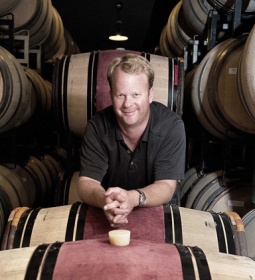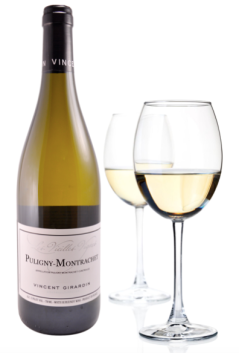 We get lots of questions about the names and terms used for different sparkling wines, so here’s a quick primer for anyone who is feeling a touch confused.
We get lots of questions about the names and terms used for different sparkling wines, so here’s a quick primer for anyone who is feeling a touch confused.
The big name in the field is Champagne, a label that used to be applied to many different kinds of fizz. Today – after years of negotiation and some fairly aggressive litigation by the Champenoise – the “Champagne” name is restricted to wines that:
- Come from the Champagne region of France
- Are made from seven authorized grapes (but mainly Pinot Noir, Chardonnay, and the red Pinot Menieur)
Get their bubbles from a secondary fermentation that takes place in bottle - Rest on the lees – dead yeast cells – from that secondary fermentation for at least 15 months for non-vintage or 30 months for vintage dated wines
The story of how Champagne was first created and popularized is long and winding and full of myth (no, Dom Perignon did not “invent” Champagne – he tried to stop it from fizzing!), but it’s ended up with Champagne holding the title of, arguably, the best sparkling wine in the world and certainly the most expensive.
Grower Champagne. This term refers to Champagne made from grapes that the estate also grew. Many Champagne houses make Champagne from fruit they purchase from growers. Veuve Cliquot and Moen & Chandon are two examples. These are certainly fine Champagnes, but over the last few decades there’s been a movement by more growers to make Champagne themselves. The price can be lower too!
 Solera Champagne. Most fine Champagnes get their complexity from aging of the base wines in oak barrels and/or extended aging “on the lees” in bottle after the secondary fermentation (where the bubbles come from!). But there’s a third approach called “solera.” This week’s featured R Dumont Solera Reserve Brut is a good example: After harvesting their 1991 vintage grapes, the Dumont family filled a single stainless steel cask with their remarkable Chardonnay. Each year, they took about a third of the wine out and used it in their NV Brut, replacing what they took with Chardonnay wine from that year’s vintage. After ten years, they released their first solera, and the release we’re featuring was pulled in early 2016, so it includes wines from 25 vintages!
Solera Champagne. Most fine Champagnes get their complexity from aging of the base wines in oak barrels and/or extended aging “on the lees” in bottle after the secondary fermentation (where the bubbles come from!). But there’s a third approach called “solera.” This week’s featured R Dumont Solera Reserve Brut is a good example: After harvesting their 1991 vintage grapes, the Dumont family filled a single stainless steel cask with their remarkable Chardonnay. Each year, they took about a third of the wine out and used it in their NV Brut, replacing what they took with Chardonnay wine from that year’s vintage. After ten years, they released their first solera, and the release we’re featuring was pulled in early 2016, so it includes wines from 25 vintages!
So while drinking “real” Champagne is a treat – and something we all should do more often! – it’s not surprising that many other sparkling wines have emerged to try to slake our thirst for fine fizz at more reasonable prices.
France’s Cremant. The term was originally used to denote wines from Champagne that had a little less fizz than regular Champagne, but that style and usage have fallen away today. Now the French use “Cremant” to designate sparkling wines made outside of Champagne using the Champagne method of secondary fermentation in bottle. You’ll find Cremant wines from all across France, many – like Cremant d’Alsace – using very different grapes from Champagne (e.g. Pinot Gris, Pinot Blanc, or even Riesling).
Sparklers from Italy, Spain and the U.S. Many Americans start their sparkling wine adventure with crisp, fruity wines from Italy like Moscato di Asti or Prosecco. We love them both, but neither uses Champagne grapes or even the Champagne method to create fizz. These wines undergo secondary fermentation in a large tank and are then bottled with the fizz already in the wine. It’s a less expensive process that won’t give you the same texture or toasty flavors found in méthode champenoise wines.
The best of Spain’s sparkling Cava wines can deliver much more Champagne quality at a fraction of the price. These wines are made using the méthode champenoise (although they’re not allowed to use that term on the label – nothing to suggest competition with Champagne is allowed!), and can show some of the creaminess and yeasty, toasty notes we love in Champagne. But Cava is usually made with different grapes – macabeu, parellada and xarel·lo are most common – which give the wines different flavors and often a nuttier, more oxidative character.
Most top-notch American sparkling wines are made with Champagne’s fermentation methods and Pinot Noir and Chardonnay grapes, and in many cases, the companies and even the same winemakers who make the best wines in Champagne create these American wines. But most grow in warmer climates and in richer soils than you find in Champagne, so they tend to be a bit heartier and seldom quite as finely textured as true Champagne.
If you have questions, please feel free to ask more about the wonderful world of sparking wines.

 Pier Luigi Tolaini left his home in Luca at age 19 to find work, promising himself he’d return to Tuscany someday to show his family how to make really good wine.
Pier Luigi Tolaini left his home in Luca at age 19 to find work, promising himself he’d return to Tuscany someday to show his family how to make really good wine.
 Helen Keplinger is sometimes pigeonholed as one of America’s best “woman” winemakers. Actually, she’s one of America’s best, period. Learning from mentors like Heidi Peterson Barrett, Kathy Joseph, Claude Gros, David Abreu, and Michel Rolland, she’s mastered the art of working with big ripe California fruit and shaping it into wines of depth, complexity and finesse.
Helen Keplinger is sometimes pigeonholed as one of America’s best “woman” winemakers. Actually, she’s one of America’s best, period. Learning from mentors like Heidi Peterson Barrett, Kathy Joseph, Claude Gros, David Abreu, and Michel Rolland, she’s mastered the art of working with big ripe California fruit and shaping it into wines of depth, complexity and finesse. The background. These wines come as Helen joins her winemaking skills with Nicolas Allen, whose dream is to create a “First Growth” estate in Napa.
The background. These wines come as Helen joins her winemaking skills with Nicolas Allen, whose dream is to create a “First Growth” estate in Napa.
 Still, sparkling wine makes us think of Champagne, and the excellent values we’ve brought in for you from Bereche,
Still, sparkling wine makes us think of Champagne, and the excellent values we’ve brought in for you from Bereche, 
 While it still carries the founder’s name, by the mid-2000s, Vincent Girardin had largely turned over responsibility the Domaine to GM Marco Caschera and winemaker Eric Germain. Since Girardin retired in 2012, Caschera and Germain continue to push this once very good estate forward towards greatness.
While it still carries the founder’s name, by the mid-2000s, Vincent Girardin had largely turned over responsibility the Domaine to GM Marco Caschera and winemaker Eric Germain. Since Girardin retired in 2012, Caschera and Germain continue to push this once very good estate forward towards greatness. Vineyard work is as natural as possible, following organic and biodynamic principles as much as Burgundy’s fickle climate and weather allows. Yields are now modest due to careful pruning and thinning of the crop during the growing season. Grapes are harvested by hand and sorted twice – once in the vineyard by the pickers and then again in the winery by hand and – since 2016 – a modern optical sorting machine.
Vineyard work is as natural as possible, following organic and biodynamic principles as much as Burgundy’s fickle climate and weather allows. Yields are now modest due to careful pruning and thinning of the crop during the growing season. Grapes are harvested by hand and sorted twice – once in the vineyard by the pickers and then again in the winery by hand and – since 2016 – a modern optical sorting machine. Once the wine is in barrel, Germain….waits. Other than keeping each barrel topped up to make up for evaporation, the wine simply sits on the fine lees of fermentation for 14-18 months of resting and maturation. When the wine is ready, the cellar team simply knocks the bottom bung out of the barrel and allows the clear wine to flow out, leaving the milky sediment behind. Bourgogne Blanc – because of the amount made – requires a little pumping, so it sees a light filtration before bottling. Everything else goes naturally from barrel to blending tank to bottle.
Once the wine is in barrel, Germain….waits. Other than keeping each barrel topped up to make up for evaporation, the wine simply sits on the fine lees of fermentation for 14-18 months of resting and maturation. When the wine is ready, the cellar team simply knocks the bottom bung out of the barrel and allows the clear wine to flow out, leaving the milky sediment behind. Bourgogne Blanc – because of the amount made – requires a little pumping, so it sees a light filtration before bottling. Everything else goes naturally from barrel to blending tank to bottle.